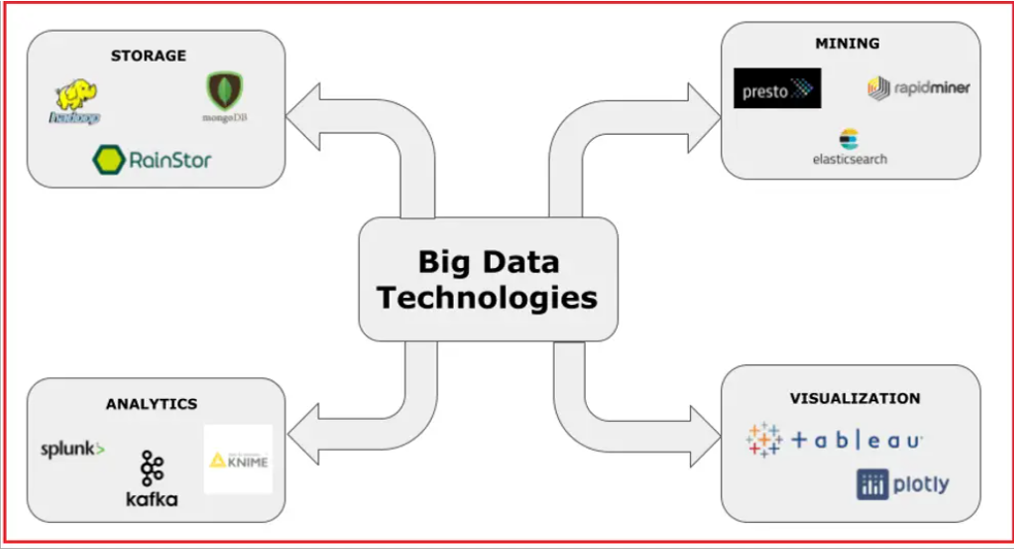

Big data technologies can be categorized into four main types: data storage, data mining, data analytics, and data visualization.
Each of these is associated with certain tools, and you’ll want to choose the right tool for your business needs depending on the type of big data technology required.
1. Data storage
Big data technology that deals with data storage has the capability to fetch, store, and manage big data. It is made up of infrastructure that allows users to store the data so that it is convenient to access. Most data storage platforms are compatible with other programs. Two commonly used tools are Apache Hadoop and MongoDB.
- Apache Hadoop: Apache is the most widely used big data tool. It is an open-source software platform that stores and processes big data in a distributed computing environment across hardware clusters. This distribution allows for faster data processing. The framework is designed to reduce bugs or faults, be scalable, and process all data formats.
2. MongoDB: MongoDB is a NoSQL database that can be used to store large volumes of data. Using key-value pairs (a basic unit of data), MongoDB categorizes documents into collections. It is written in C, C++, and JavaScript, and is one of the most popular big data databases because it can manage and store unstructured data with ease.
2. Data mining
Data mining extracts the useful patterns and trends from the raw data. Big data technologies such as Rapidminer and Presto can turn unstructured and structured data into usable information.
- Rapidminer: Rapidminer is a data mining tool that can be used to build predictive models. It draws on these two roles as strengths, of processing and preparing data, and building machine and deep learning models. The end-to-end model allows for both functions to drive impact across the organization [3].
- Presto: Presto is an open-source query engine that was originally developed by Facebook to run analytic queries against their large datasets. Now, it is available widely. One query on Presto can combine data from multiple sources within an organization and perform analytics on them in a matter of minutes.
3. Data analytics
In big data analytics, technologies are used to clean and transform data into information that can be used to drive business decisions. This next step (after data mining) is where users perform algorithms, models, and more using tools such as Apache Spark and Splunk.
- Apache Spark: Spark is a popular big data tool for data analysis because it is fast and efficient at running applications. It is faster than Hadoop because it uses random access memory (RAM) instead of being stored and processed in batches via MapReduce [4]. Spark supports a wide variety of data analytics tasks and queries.
- Splunk: Splunk is another popular big data analytics tool for deriving insights from large datasets. It has the ability to generate graphs, charts, reports, and dashboards. Splunk also enables users to incorporate artificial intelligence (AI) into data outcomes.
4. Data visualization
Big data technologies can be used to create stunning visualizations from the data. In data-oriented roles, data visualization is a skill that is beneficial for presenting recommendations to stakeholders for business profitability and operations—to tell an impactful story with a simple graph.
- Tableau: Tableau is a very popular tool in data visualization because its drag-and-drop interface makes it easy to create pie charts, bar charts, box plots, Gantt charts, and more. It is a secure platform that allows users to share visualizations and dashboards in real time.
- Looker: Looker is a business intelligence (BI) tool used to make sense of big data analytics and then share those insights with other teams. Charts, graphs, and dashboards can be configured with a query, such as monitoring weekly brand engagement through social media analytics.